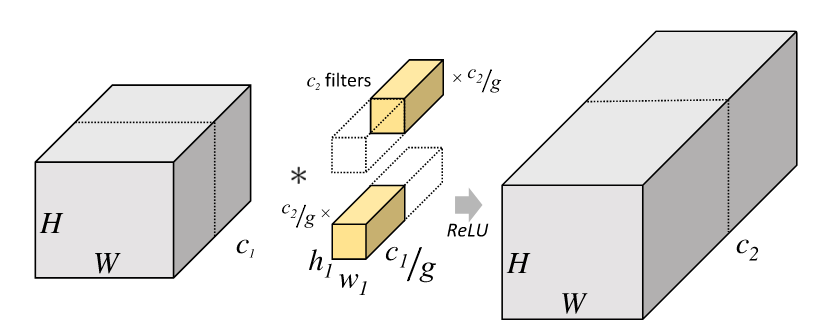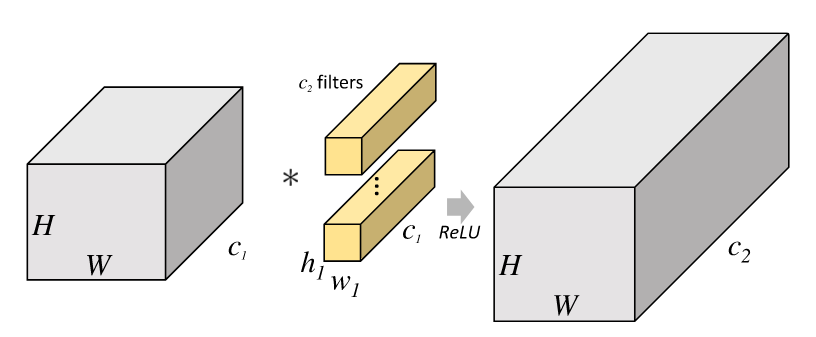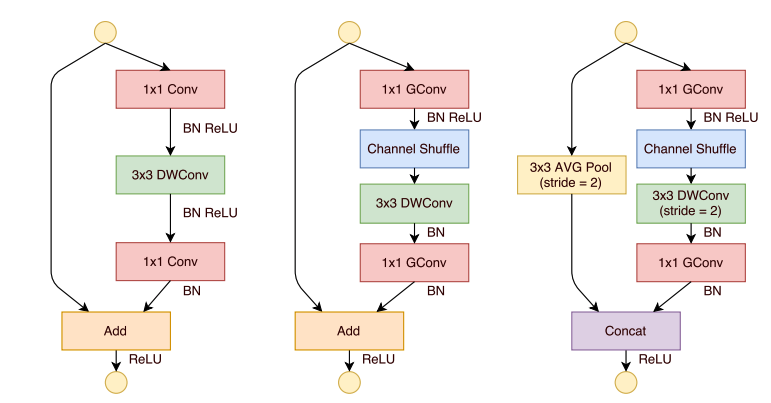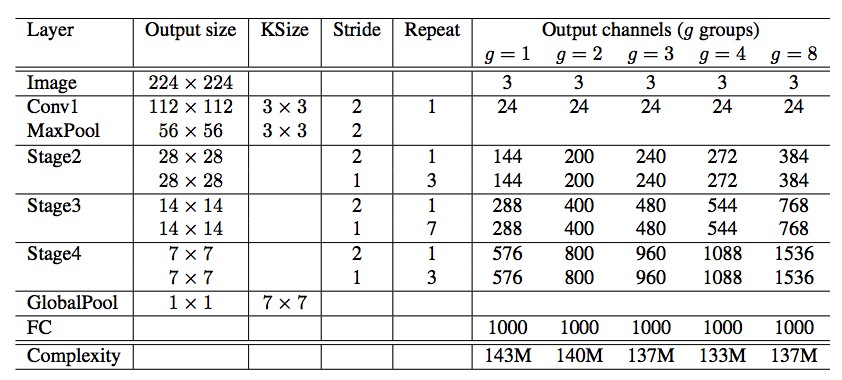ShuffleNet
How do we reduce the computational complexity of CNN while without loss in accuracy while running on Mobile and Edge Devices?
Introduces two new operations:
- Pointwise Group Convolutions
- Shuffle Operations
https://tinyurl.com/shufflenet
Current Solutions
- Increase depth (GoogLeNet)
- Residual Networks (ResNet)
- DepthWise Separable Convolutions (Xception, MobileNet, ResNeXt)
- Grouped Convolutions (AlexNet)
- RL (NasNet)
- Pruning, Quantisation, DFT/FFT


Problem With Group Convolutions
- ResNeXt only 3 × 3 layers are equipped with group convolutions. As a result, for each residual unit in ResNeXt the pointwise convolutions occupy 93.4% multiplication-adds
- if multiple group convolutions stack together, there is one side effect: outputs from a certain channel are only derived from a small fraction of input channels
- This property blocks information flow between channel groups and weakens representation
Solution
-
Channel Shuffle for Group Convolutions
-
If we allow group convolution to obtain input data from different groups, the input and output channels will be fully related
-

Architecture

Result


Scaling Factor means scaling the number of filters in ShuffleNet 1× by s times thus overall complexity will be roughly s^2 times of ShuffleNet 1×